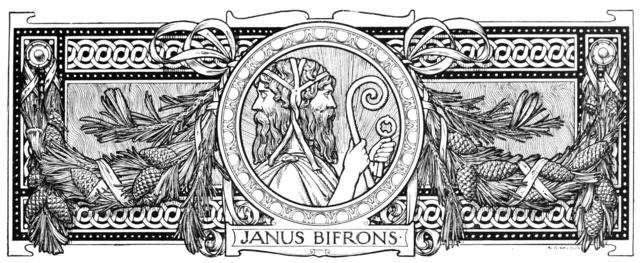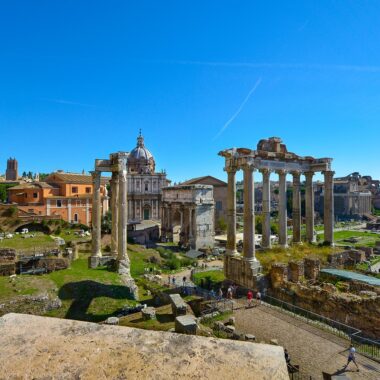Pagan symbols is everywhere and is easily found by researching the history of our modern customs and practices. Some of the days of the week and even some months of the year are named after Pagan gods. This week we are going to take a look at the month of January and find out what part paganism plays in the first month of our current calendar year.

The birth of the month of January
The birth of the month of January is credited to Numa Pompilius. Numa was the second of seven kings that ruled Rome before it became a republic. In the 6th century B.C. Numa added Ianuarius and Februarius to the 10 month long “Romulus” religious calendar. Ianuarius became the first month of the revised 12 month Roman Republican Calendar in 200 B.C.E. Ianuarius is pronounced Januarius, meaning month of Janus.
Janus as a pagan symbol
Janus was the Pagan Roman god of beginnings and endings and of gates and doors. He was depicted having two faces with one face looking to what is behind and with one face looking toward what lies ahead. The reasoning behind the symbolism of the two faces is that both gates and doors have two sides and to end something to start a new beginning one must pass through being on one side or the other not remaining in the middle.
Janus in Rome
Janus’ worship preceded the founding of Rome as a city and became a very important god to the Romans. Though many Roman gods can trace their roots to the Greek pantheon, Janus stands out as having no Greek counterpart. His ability to look both forward and behind made him the Guardian of Exits and Entrances with the best representation of this in Ianus Geminus. The Ianus Geminus is a double-gated structure (one door facing the rising sun and the other, the setting sun) found on the Forum Romanum. When the gates of the temple were closed it represented peace within the Roman Empire. When the gates were open, it meant that Rome was at war. Between the reigns of Numa and Augustus, the gates were shut only once.
The popularity of Janus can also be seen on Roman coins. The earlier coins depicting an older bearded face looking behind with a younger clean shaven face looking forward. As the Roman Empire grew, both faces were shown as clean shaven. Later on in the empire both faces were shown as bearded with Janus holding a key in his right hand.
The origin of the worship of Janus being a pagan god is attributed to Janus the first king of Latium. As king, Janus’ rule brought about the Golden Age to his people which meant a time of great peace and welfare in Latium. A blessing to Janus was requested at the beginning of every day, month, and year.
By Laura Jean Karr
























